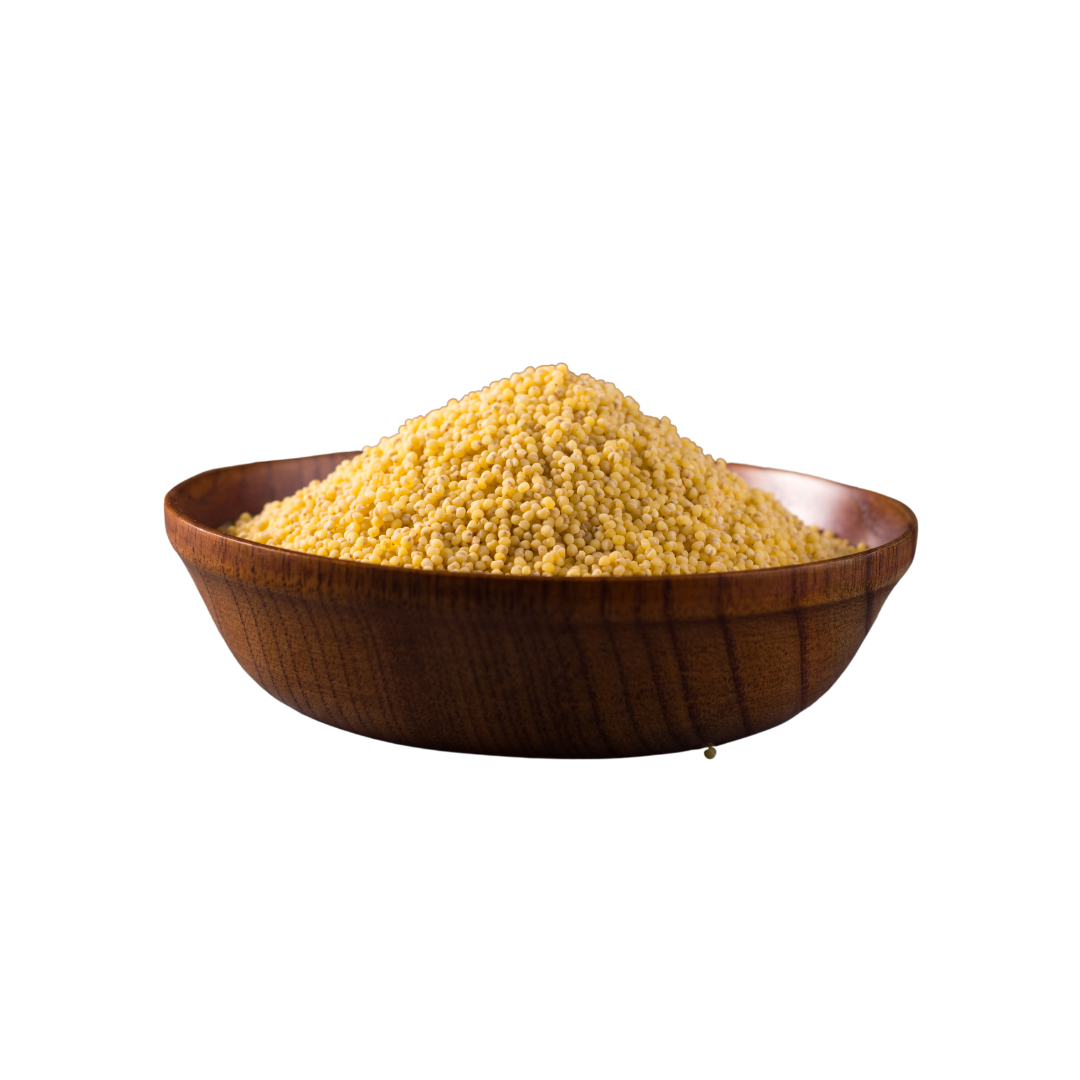
About
Job’s tears, also known as yellow millet, pearl barley, or kanji, is a type of cereal grain that belongs to the family of Poaceae. It has a hard outer shell, which needs to be removed before consumption. The grain is widely used in traditional medicine to treat various ailments due to its numerous health benefits.
Health Benefits of Job’s Tears:
-
Lowers cholesterol levels: Job’s tears contain beta-glucan, which helps to reduce LDL or bad cholesterol levels in the body.
-
Regulates blood sugar levels: The high fiber content in Job’s tears slows down the absorption of glucose in the body, which helps to regulate blood sugar levels.
-
Promotes weight loss: The low glycemic index of Job’s tears makes it an ideal food for weight loss as it keeps you feeling full for longer periods of time.
-
Anti-inflammatory properties: Job’s tears have anti-inflammatory properties that help to reduce inflammation in the body, thereby preventing chronic diseases.
-
Boosts immunity: The high levels of antioxidants in Job’s tears help to boost the immune system and protect the body from infections.
-
Improves digestion: The high fiber content in Job’s tears promotes digestive health and helps to prevent constipation.
Diseases that can be cured using Job’s tears:
- Diabetes
- High cholesterol levels
- Obesity
- Inflammatory bowel disease
- Arthritis
- Cardiovascular disease
- Respiratory diseases
Energy and Macronutrient Content per 50g serving of Job’s Tears:
| Nutrient | Amount |
|---|---|
| Energy | 180 kcal |
| Carbohydrates | 38 g |
| Fats | 1 g |
| Protein | 5 g |
| Fiber | 5 g |
| Water | 5 g |
Vitamin Content per 50g serving of Job’s Tears:
| Vitamin | Amount |
|---|---|
| Vitamin A | 0 IU |
| Vitamin B1 | 0.2 mg |
| Vitamin B2 | 0.05 mg |
| Vitamin B3 | 3 mg |
| Vitamin B6 | 0.25 mg |
| Vitamin B12 | 0 mcg |
| Vitamin C | 0 mg |
| Vitamin D | 0 IU |
| Vitamin E | 0.25 mg |
| Vitamin K | 0.2 mcg |
| Folate | 15 mcg |
| Biotin | 5 mcg |
Mineral Content per 50g serving of Job’s Tears:
| Mineral | Amount |
|---|---|
| Calcium | 30 mg |
| Iron | 1.5 mg |
| Iodine | 2 mcg |
| Zinc | 1.2 mg |
| Magnesium | 85 mg |
| Phosphorus | 150 mg |
| Potassium | 210 mg |
| Sodium | 5 mg |
| Chloride | 15 mg |
| Copper | 0.2 mg |
| Chromium | 2 mcg |
| Fluoride | 0 mcg |
| Molybdenum | 8 mcg |
| Manganese | 0.6 mg |
| Selenium | 6 mcg |
What is Job's tears/yellow millet, and how is it different from other grains?
Job's tears, also known as yellow millet, is a type of grain that has been cultivated for centuries. It is gluten-free and has a unique taste and texture.
What are the health benefits of Job's tears/yellow millet?
Job's tears contain antioxidants, fiber, and minerals that can promote heart health, aid digestion, and improve immune function.
How do you cook Job's tears/yellow millet?
Job's tears can be cooked like rice or quinoa and can be used in a variety of dishes such as salads, soups, and porridge.
Where can I find Job's tears/yellow millet?
Job's tears can be found in health food stores, Asian markets, and online.
Is Job's tears/yellow millet a good source of protein?
Job's tears contain some protein, but it is not considered a high-protein food.
Is Job's tears/yellow millet suitable for a gluten-free diet?
Yes, Job's tears is gluten-free and can be a great option for those with celiac disease or gluten intolerance.
How does Job's tears/yellow millet compare to other ancient grains like quinoa and amaranth?
Job's tears has a slightly different texture and taste compared to quinoa and amaranth, but all three grains offer similar health benefits.
Can Job's tears/yellow millet be used in baking?
Yes, Job's tears flour can be used in baking as a gluten-free alternative to wheat flour.
Does Job's tears/yellow millet contain any allergens?
Job's tears is not considered a common allergen, but individuals with food allergies should always check with their doctor before consuming new foods.
What is the nutritional profile of Job's tears/yellow millet?
Job's tears is a good source of fiber, vitamins, and minerals including iron, magnesium, and phosphorus.
How can I incorporate Job's tears/yellow millet into my diet?
Job's tears can be used in a variety of dishes, such as stir-fries, soups, and salads, and can also be used as a base for grain bowls or porridges.
Is Job's tears/yellow millet easy to digest?
Job's tears is a whole grain and may be harder to digest for some individuals. Soaking or sprouting the grains before cooking can make them easier to digest.
How should Job's tears/yellow millet be stored?
Job's tears should be stored in an airtight container in a cool, dry place.
What are some common dishes that use Job's tears/yellow millet?
Job's tears can be used in a variety of Asian dishes such as congee, desserts, and sweet soups.
Can Job's tears/yellow millet be used as a rice substitute?
Yes, Job's tears can be used as a substitute for rice in many recipes.
How long does it take to cook Job's tears/yellow millet?
Job's tears usually take about 20-30 minutes to cook, depending on the desired texture.
What is the flavor profile of Job's tears/yellow millet?
Job's tears have a nutty and slightly sweet flavor.
Is Job's tears/yellow millet a good source of carbohydrates?
Yes, Job's tears is a good source of complex carbohydrates, which can provide sustained energy.








